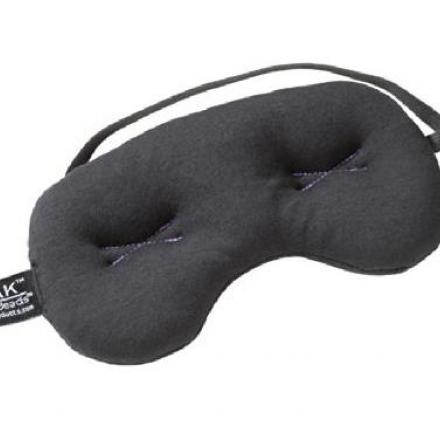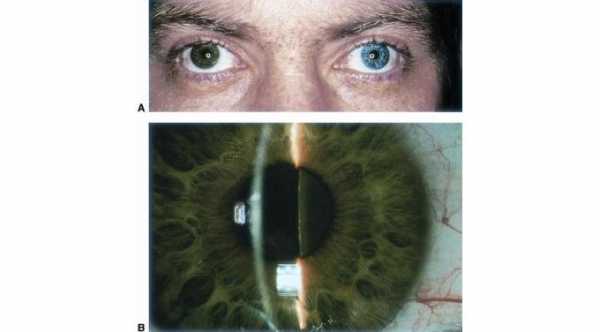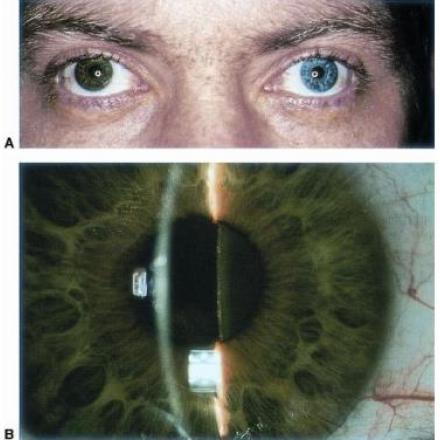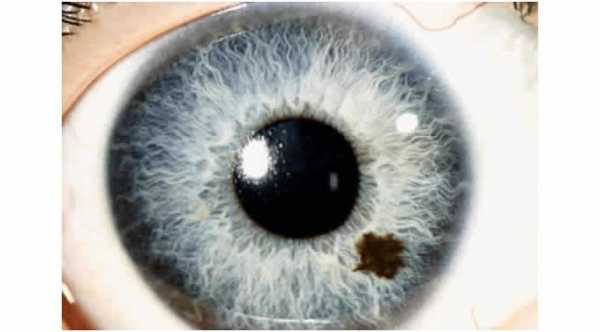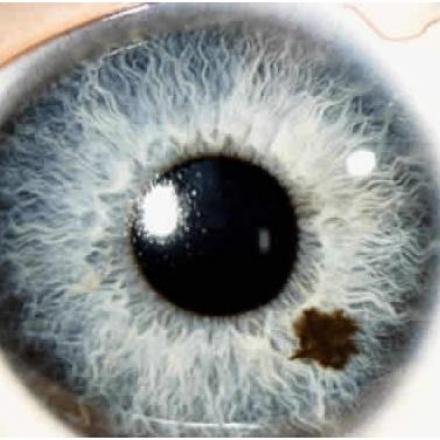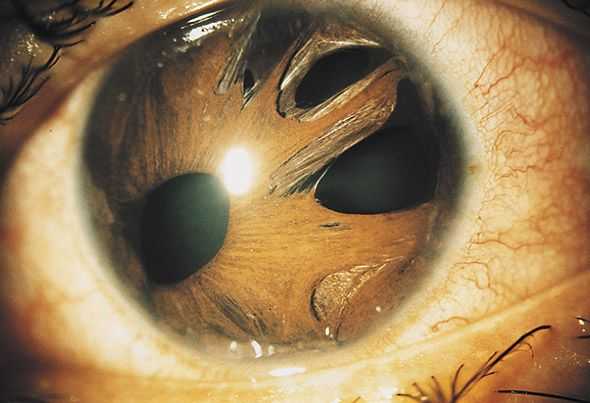
Iridocorneal Endothelial Syndrome
Iridocorneal Endothelial Syndrome or ICE syndrome is an ocular syndrome that consists of three overlapping disorders that affect the anterior segment of the eye.
These three disorders are:
1- Iris nevus (Cogan-Reese) syndrome.
2- Chandler's syndrome.
3- Essential (progressive) iris atrophy.
The common thing between these three disorders is abnormal corneal endothelial layer. These abnormal endothelial cells have the capacity to proliferate and migrate over the angle of the eye and on the surface of the iris.
This syndrome affects middle-aged female, 20-50 years of age and it is a unilateral condition.
Essential Iris Atrophy
Severe and progressive iris atrophy which can lead to abnormal position of the iris (Corectopia), irregular pupil shape, heterochromia and hole formation on the iris which is called pseudopolycoria.
Pseudopolycoria can cause double vision because lights enter inside the eye through more than one pupil.
Iris Nevus or Cogan-Reese Syndrome
Diffuse or multiple nodules of iris nevus that spread all over the iris.
Chandler Syndrome
It is characterized by corneal edema and glaucoma. The incidence of glaucoma is less severe than in the other two variants and sometimes the intraocular pressure could be normal.
Causes of Iridocorneal Endothelial Syndrome
It is thought that the cause is viral infection because they found Herpes simplex virus DNA in corneal specimens from patients with ICE syndrome.
Signs and Symptoms of Iridocorneal Endothelial Syndrome
Common signs and symptoms in these three disorders are glaucoma and corneal edema.
1- Corneal Edema
It occurs because these abnormal endothelial cells can’t regulate the flow of fluid in and out the cornea. Corneal edema cause blurred vision and halos on lights especially in the morning hours as the result of lid closure which prevents evaporation of tears and fluid from the cornea. Throughout the day, vision can improve a little because the cornea dehydrates with exposure to air.
2- Glaucoma
Proliferation of these abnormal cells over the angle can cause the formation of anterior synechia. These synechia will block the drainage of Aqueous Humor outside the eye and lead to high intraocular pressure. This type of glaucoma is called angle closure glaucoma. Angle closure glaucoma can cause red eye, eye pain, and blurred vision.
Treatment of Iridocorneal Endothelial Syndrome
There is no specific treatment for Iridocorneal Endothelial Syndrome. The only treatment available is to treat glaucoma with eye drops, trabeculectomy and shunts. Treatment with eye drops is usually ineffective. Read more about, glaucoma treatments




